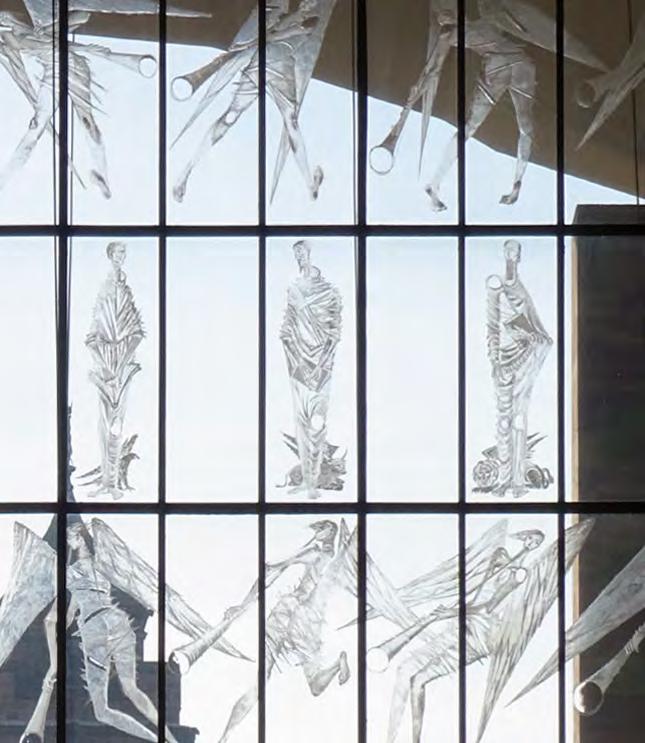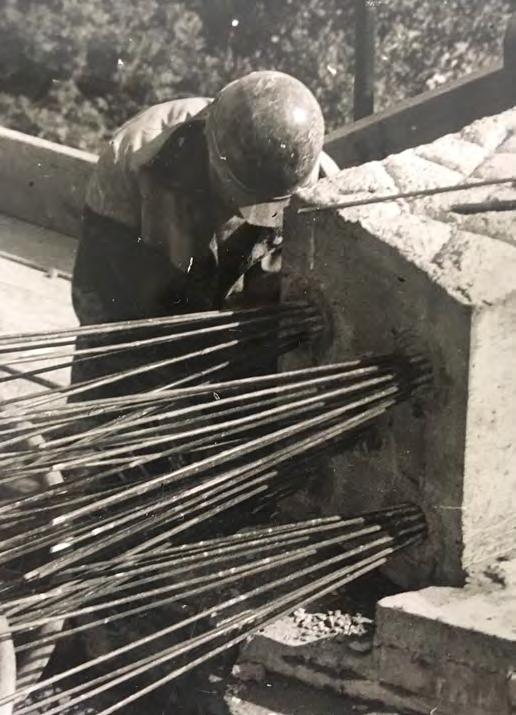CONSERVATION FRAMEWORK
5.3.11 ENVIRONMENTAL SUSTAINABILITY See also:
Solutions to heating and lighting the building in the 1960s were innovative and very much of their time, which paves the way for new responses to be equally innovative, where appropriate.
5.3.4
Ruined cathedral
VULNERABILITIES AND CONFLICTS
5.3.5
New cathedral
5.3.6
Repair, maintenance and conservation
There is potential for conflict between the significance of the Cathedral for its Post-War art and design and the requirements to upgrade or replace original building services. The most pressing issue is heating. This is partly due to the progressive failure of the original system, and partly due to the inefficiencies of the building, with large expanses of glass and extreme fluctuations in temperature. The scope for reducing the Cathedral’s carbon footprint is also hampered by this.
HERITAGE CONSIDERATIONS Coventry Cathedral has a responsibility to future generations to play its part in cutting carbon emissions. Even small actions as part of day to day building management can have an impact on the climate crisis and thought should always be given to whether there is a more sustainable way of achieving the same goal. Climate change also has a direct impact on the Cathedral. Weather events are getting more dramatic and more frequent, putting additional pressure on all building types. The environmental conditions inside the Cathedral are also considered here, as they can be affected by the external weather conditions and any changes to these. Pressure for 20th-century buildings such as Coventry Cathedral to become more energy efficient will continue to increase, particularly as existing building services reach the end of their useful life and options for their replacement are considered. The reuse and retrofitting of historic buildings is inherently sustainable but thought must be given to how this can be achieved in a way that does not negatively impact on significance, which includes understanding how Spence originally designed the building to function.
At Coventry Cathedral, the following are potential risks to environmental conditions, built fabric and its associated significance: •
Rainwater laced with de-icing salts is percolating through the open joints in the paving in the porch and potentially effecting the pre-stressed concrete beam buried beneath the Queen’s Steps.
•
Water ingress may also have an impact on the integrity of the pre-stressed concrete roof structure.
•
More extreme cold periods causing freeze/thaw damage to stonework.
•
Increased extreme weather can impact on the distribution of pests that threaten the integrity of fabric (e.g. woodworm or beetle infestations).
136
•
The Sutherland tapestry is not protected from extremes of the heat or UV from sunlight and, at times, is known to significantly expand and contract due to changes in mature humidity. Moths are also a problem.
•
Increased rainfall can be beyond the capacity of rainwater goods, resulting in saturation of the stonework.
•
The internal rainwater drain pipes are potentially vulnerable to blockage or failure with potentially serious consequences.
•
Inefficiencies in the heating system reduce the ability to heat the nave space to a level of ‘conservation heating’ appropriate to the historic fabric.
•
The external envelope of the new cathedral is inefficient, and the micro-climates found in many of the interior spaces are often inhospitable.
•
Chapel of Christ the Servant – the building envelope is leaking and offers almost no environmental buffering. This coupled with the failed heating system renders it largely unusable.
•
The ruined cathedral is exposed to weather externally, with areas that were designed to be internal also exposed. This has resulted in increasing deterioration of organic growth in those exposed areas.
•
Environmental conditions in the undercroft and exhibition spaces may be having a harmful effect on the displayed and stored glass from St Michael’s Church (parts of which are medieval).
•
The impact on current environmental conditions on fixtures, monuments, furniture etc is not completely understood but the detrimental effect on the organ is known.














